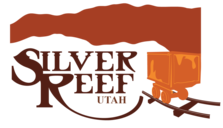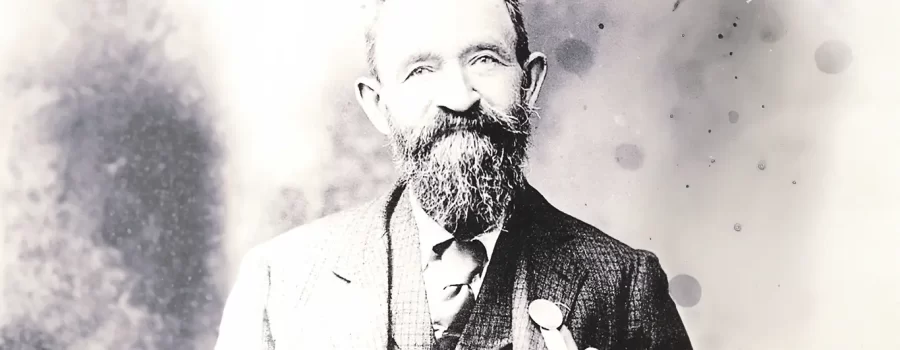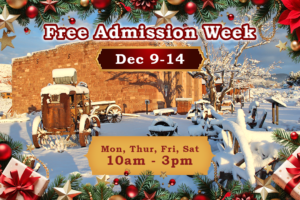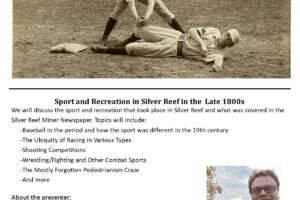
John Kemple was born 11 December 1835 in New Jersey.1 He was the only son and second of six
children of George Kemple and Hannah Foster. The family moved to West Virginia2 and then
Marshall, Virginia, by 1840.3 His mother died when he was ten, and his father remarried and had
seven more children. On the 1850 census, he was living with his family in Marshall, Virginia.4 He had
difficulty getting along with his stepmother and left for California and the gold rush in 1850 at age
fifteen.5
A biography of John by his great grandson includes the following: “John followed up every new camp that was started, but never found the big one. He joined the rush to Alaska and the Klondike gold fields, but was also unsuccessful there. One year in Alaska he was so far north that winter caught his party on the polar ice pack. They would have starved, except that he discovered a mammoth, frozen in the ice. They managed to dig in far enough to cut meat from the pre-historic beast and eat it. He told also of another, smaller figure, deeper in the ice, which he said looked like a human. A few years later he tried to lead a scientific expedition back to the place, but couldn’t find it again.”6
In 1866, John rode into the Leeds-Harrisburg area with a small string of horses, on a prospecting journey from Montana.7 He rented a room with the Orson Adams family of Harrisburg for the winter. John had assay equipment with him, and probably assayed materials that seemed to hold possible ores.8 He left the next spring for White Pine, Nevada.9 He sent ore samples to another assayer, H. H. Smith of Beaver County, Utah. Smith refused to assay it, claiming: “Kemple must be crazy to ask me to assay a sand rock”. John found silver float that assayed over $17,000 per ton. 10 However, he didn’t seem to know it source.
Reminiscing many years later, John visited David McMullin in his blacksmith shop at Leeds and told the story of his life. He asked, “Dave, you remember that soap-stone vein in the White Reef on the north side of the pass through which Quail creek flows, and is now covered with a swamp? You got soap-stone there and made slate pencils. That is where I got the ore from which I extracted the silver button I showed you nearly forty years ago. The soap-stone assayed 36 ounces in silver”.11
John may have thought his finds were false leads, for he left for White Pine, Nevada.12 He returned to Harrisburg in 1868 and then found his original high-grade silver discovery, with another find in 1870. On the 1870 census, John was a blacksmith living with Adams family in Harrisburg, Washington, Utah Territory.13 He didn’t file any mining claims until February 1871. He and several others organized the Union Mining District and recorded sixteen claims in the next eighteen months.14
1 Death certificate, Arizona Deaths, 187-1951.
2 John Orson Kemple: An Autobiography.
3 United Stated Census, 1840.
4 United States Census, 1850.
5 John Orson Kemple: An Autobiography.
6 Biography of John Kemple, by great grandson James E. Kemple.
7 Ibid; Memories of Silver Reef, in Utah Historical Quarterly, 1934; Interview with Marietta M Mariger, 1962.
8 Silver, Sinners and Saints, by Proctor and Shirts, 1991, p. 27.
9 Memories of Silver Reef, in Utah Historical Quarterly, Vol 3, No 4, 1934, p. 106.
10 Silver Reef Miner, 29 October 1878.
11 Memories of Silver Reef, in Utah Historical Quarterly, Vol 3, No 4, 1934, p. 106.
12 Ibid.
13 United States Census, 1870.
14 Harrisburg Mining District Record Book A:7-16; Biography of John Kemple, by great grandson James E. Kemple.

John returned to Harrisburg in 1874, filed his first claim15, and helped reorganize the old Union Mining District under new mining laws, naming it the Harrisburg Mining District. He met and married Amelia Leicht in 1874 in Middleton, Washington, Utah Territory; they had six children. They made their home in Silver Reef, where John was employed in the mines.16 His son, John Orson Kemple, describes growing up in Silver Reef: “We children ran wild like Indians and in the summer us boys spent our time swimming, hunting, and trapping quail and grey squirrels. Fighting wasps was one of our favorite pastimes…”17
In 1879, John moved his family to South Star, Beaver, Utah18 and lived there for six years. They were isolated and had to haul water ten miles by wagon.19 On the 1880 census, he is living in Beaver with his wife and two sons.20 In 1885, they moved back to Silver Reef, where he was listed as a delinquent tax payer in 1890.21 His son John Orson attended school in Silver Reef “until [he] reached the second reader” in the winter of 1886. The next winter he attended grammar school in Harrisburg. He was back at school in Silver Reef for the winters of 1888-1892.22
In 1891, the family moved to the White Hills Country in Mohave, Arizona. John soon squandered his fortune again on new prospecting, and his wife finally divorced him. She remarried about 1898 and became quite the businesswoman in Arizona. Shortly afterward, John again struck it rich, this time in gold, and he worked several mines at “Kemple Camp”.23
John accompanied Henry Blackner and Mr Joy, late superintendent of the Rob Roy mine, to Silver Reef in 1895, to test the mine properties belonging to Woolley, Lund and Judd. They were found satisfactory and the purchase was made.24 The same year, Blackner struck a four-foot vein of rich in silver in the Kemple mine he was leasing in Silver Reef District.25 The next year, the Monte Cristo (or Monte Carlo) Gold and Silver mining company incorporated with $100,000 in shares, appropriated for the purchase and development of the John Kemple claim on the Beaver River near the town of Minersville in the Star mining district.26
Amelia had a restaurant business; there was an advertisement for a social dance “for the young folks of the camp” held at the Kemple restaurant in 1899.27 On the 1900 census, John was a divorced miner living in living in Chloride Town, Mohave, Arizona.28 Amelia married John H. More about 1898. John Kemple continued prospecting for copper in the northern part of the county. He also hatched a deal with A. E. Vanderbock and Ben Hastings to work his tailings in Leeds using a cyanide process, financially backed by John Hall.29
15 Jim Kemple Shares Great-Grandfather’s History, BLM talk, 10 January 2012.
16 Biography of Amelia Leicht Kemple More.
17 John Orson Kemple: An Autobiography.
18 Biography of John Kemple, by great grandson James E. Kemple.
19 John Orson Kemple: An Autobiography.
20 United States Census, 1880.
21 Salt Lake Herald, various issues in November and December 1890.
22 Biography of John Kemple, by great grandson James E. Kemple.
23 Ibid.
24 Salt Lake Tribune, 30 October 1895, p. 6.
25 The Union [St George], 21 December 1895, p. 2.
26 Salt Lake Herald, 9 May 1896, p. 3; 28 January 1902, p. 5.
27 Mohave County Miner, 1 April 1899, p. 4.
28 United States Census, 1900.
29 Mohave County Miner, 19 October 1901, p. 3.

In 1904 we find John and his son working on a claim in the Black Mountains of Mohave, Arizona, and getting good ore.30 But the next year, John is injured in a run-a-way accident near Chloride, Mohave, Arizona. He was thrown from his wagon and lay more than 50 hours in the desert without food or drink. When found by a prospector, he was almost dead, but his daughter Effie nursed him back to health.31
By 1907, samples of ore from Kemple Camp were reported to be running in the hundreds of dollars per ton.32 This sparked great interest in the mines and several men from Salt Lake City closed a deal in Kingman to take over the properties which were yielding gold, silver and copper.33 Within a month, a great strike of gold was made.34 Full payment was made to John35, but he was sued by M. A. Moore, who took an active part in the sale of the properties. Moore eventually received his full commission.36 Kemple Camp was soon running 12-hours shifts and getting good values in gold.37
John was living in Mohave, Arizona, in 1908.38 About this time, John decided to make peace with his family in West Virginia, so he returned briefly to the Kemple plantation in West Virginia. He said that his father commented that “you look terrible” and gave him a few dollars to clean up and buy some new clothes. However, the family didn’t seem to get along well, so he returned to Arizona.39
John lived in several places in his later years, including San Diego and Los Angeles, California; Yellow Pine Mine and Goodsprings, Nevada; and Kingman, Arizona.40 He eventually came back to Silver Reef, where he lived with a variety of his grown children.41 In 1917, his daughter Emma and his son-in-law came from Oatman to his bedside, where he was very ill.42 He died 26 October 191843 at the home of his daughter in Kingman, Arizona, due to a complication of disorders induced by advanced age. He was buried in Mountain View Cemetery.44
John had followed mining and prospecting the greater part of his life, and at times was quite successful.45 He died a poor man but leaves a family of literally hundreds of Kemples and their descendants. He has been written up in the journals of the Utah Historical Society, has been the subject of a book-length feature in True Magazine, and his story was told on the Death Valley Days Television series.46
30 Arizona Republic, 16 February 1904, p. 8; Mohave County Miner, 13 February 1904; p. 3.
31 Mohave County Miner, 14 October 1905, p. 2.
32 Mohave County Miner, 27 April 1907, p. 3.
33 Mohave County Miner, 24 August 1907, p. 3; 14 September 1907, p. 3.
34 Mohave County Miner, 5 October 1907, p. 3; Los Angeles Herald, 21 October 1907, p. 10.
35 Mohave County Miner, 14 March 1908, p. 2.
36 Mohave County Miner, 1 August 1908, p. 3; 29 August 1908, p. 3; 28 November 1908, p. 3.
37 Mohave County Miner, 12 December 1908, p. 2.
38 Arizona Voter Registrations, 1866-1955.
39 Biography of John Kemple, by great grandson James E. Kemple.
40 Ibid.
41 Jim Kemple Shares Great-Grandfather’s History, BLM talk, 10 January 2012.
42 Mohave County Miner, 26 May 1917, p. 8.
43 Arizona Deaths, 1870-1951.
44 Mohave County Miner and Our Mineral Wealth, 2 November 1918, p. 1.
45 Ibid.
46 Biography of John Kemple, by great grandson James E. Kemple.

Research by Elaine Young, Silver Reef Foundation historian, 2016
Please email eyoung@young-zone.org for additions or corrections



![Identifying Chinese Artifacts [Video]](https://silverreef.org/wp-content/uploads/2023/12/Chris-holding-liquor-jar-300x200.webp)

